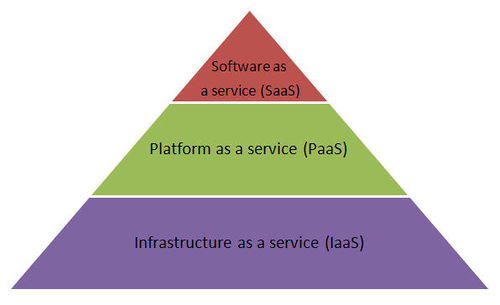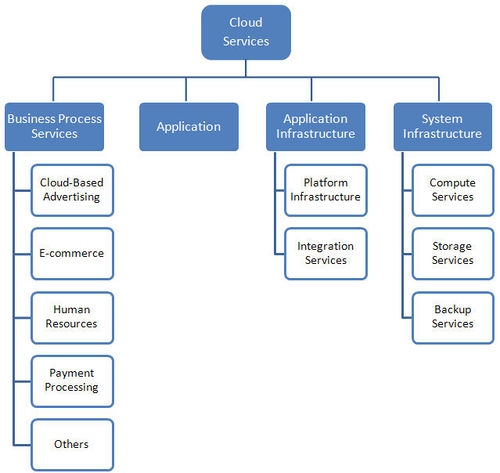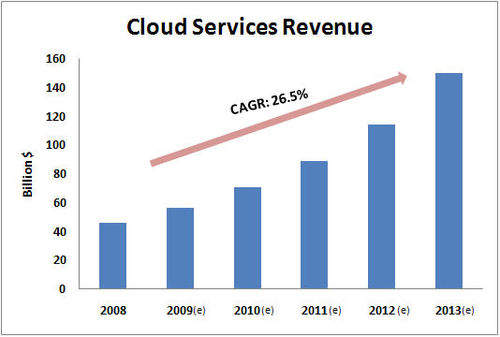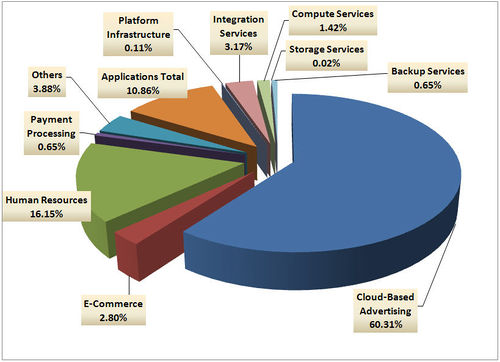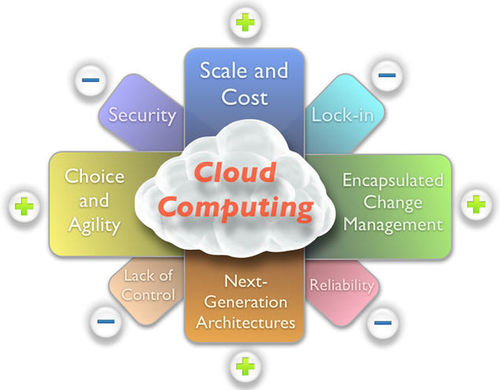Overview
- Cloud computing is a style of computing in which dynamically scalable and often virtualized resources are provided as a service over the Internet.
- Users need not have knowledge of, expertise in, or control over the technology infrastructure in the "cloud" that supports them.
- Cloud computing services often provide common business applications online that are accessed from a web browser, while the software and data are stored on the servers.
The concept generally incorporates combinations of the following:
Market overview
Cloud services provided worldwide are:
Companies providing cloud computing technology
Y-on-Y revenue from cloud services
Cloud services - revenue breakup
Pros and cons of cloud computing
Technical overview
Cloud computing architecture
Three major participants in cloud:
- Cloud Providers; building out clouds, for instance Google, Amazon, etc. effectively technology providers.
- Cloud Adopters / Developers; those developing services over the Cloud and some becoming the first generation of Cloud ISVs.
- Cloud "End" Users; those using Cloud provisioned services, often without knowing that they are cloud provisioned, e.g. Facebook users have no idea that their favorite FB app is running on AWS.
Various architectural layers:
- Operations: it supports functional business processes rather than supporting the technology itself.
- Service layer: it is made up of application code, bespoke code, high-level ISV offerings.
- Platform layer: it is made up of standard platform software i.e. app. servers, DB servers, web servers, etc., and an example implementation would be a LAMP stack.
- Infrastructure layer: it is made up of
- (i) infrastructure software (i.e.virtualisation and OS software)
- (ii) the hardware platform and server infrastructure
- (iii) the storage platform
- Network layer: it is made up of routers, firewalls, gateways, and other network technology.
Delta of Effort / Delta of Opportunity
The gap between the cloud providers and the end cloud users is known as the delta of effort and also the delta of opportunity.
It is the delta of effort in terms of skills, abilities, experience and technology that the cloud adopter needs to deliver a functional service to their own “End Users”. This will be potentially a major area of cost to the cloud adopters. But it's also the delta of opportunity in terms of 'room' to innovate.
Cloud Adoption Strategy
Some of the steps which need to be followed in order to identify the relevant business scenario relevant for leveraging cloud are:
1. Access:
- a. Application portfolio to identify core and non-core applications
- b. Map the scenarios relevant for cloud adoption
- c. Identify business processes which are more suitable for cloud adoption
- d. Evaluate the cloud vendors for strategic and tactical use scenarios
2. Validate:
- a. Justify the cost benefits and business case
- b. Perform pilots and proof of concepts to identify functional gaps and assess user experience
3. Technology:
- a. Changes to be done on the organizations policies and procedures
- b. Governance and operations
- c. Standardization across various cloud projects
4. Execute:
- a. Migration and Integration
- b. Co-existence and switchover planning
